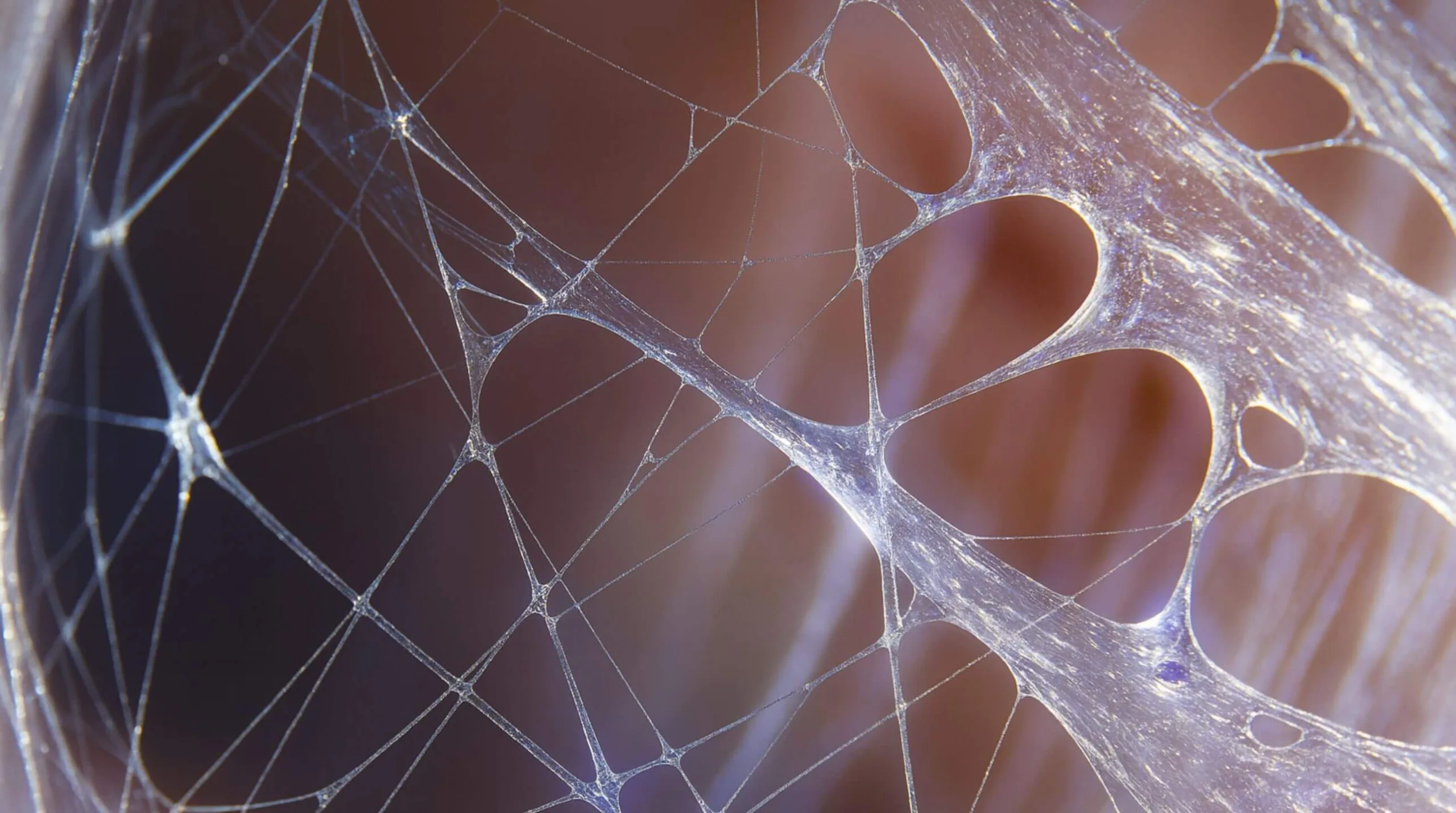A Gentle Path to Lasting Ease
Myofascial Release in London
Gentle, sustained, hands-on techniques focused on the body’s fascial network, helping reduce tension, improve mobility and support more comfortable movement.

What Is Myofascial Release (MFR)?
Fascia is a continuous, 3Dimensional web of connective tissue that supports, separates and connects muscles, bones, nerves and organs. When healthy, it enables muscles to slide and glide over each other providing fluid movement.
After surgery, injury, inflammation or repetitive postures (think sitting at the desk), fascia may become tight and restricted, contributing to discomfort or altered movement patterns.
Myofascial Release is a gentle, sustained approach that waits for the tissue to respond, encouraging softening, improving glide and more efficient movement.
- Gentle, sustained holds (no forced stretching)
- Focus on the fascial system rather than only muscles
- Integrates with Fascial Fitness and Scar Therapy where appropriate
The Science Behind Myofascial Release Technique
You might wonder what’s actually happening in your body during a session. It’s not magic, but it is fascinating science. Your fascia is rich in a substance called hyaluronan, which acts as a natural lubricant, allowing layers of tissue to slide smoothly over one another.

When tissue is immobile or inflamed, this lubricant can become thick and sticky, creating adhesions. Myofascial techniques, which involve gentle shearing and sustained pressure, are like a biological ‘warming up’. They help to decrease the viscosity of the ground substance, making it more fluid and allowing those stuck layers to glide freely once more. We are, in essence, rehydrating the tissue from the inside out and reminding it how to move.

Who Might Benefit?
Because fascia interconnects the whole body, restrictions may contribute to a range of experiences. MFR can help with:
Back, Neck & Shoulder Tension
Persistent stiffness, limited rotation, or a sense of heaviness.
Post-Surgical Recovery
C-section, hysterectomy, breast surgery or joint replacement, working gently alongside scar therapy.
Headache, Jaw & TMJ related Tension
Neck/shoulder tightness, jaw clenching or tension headaches.
Fibromyalgia, Sciatica, Plantar Fasciitis
As part of a gentle, person-centred plan.
Feeling ‘Stuck/ Wonky’ or Asymmetrical
Compensatory patterns can cause movement that feels off or guarded.
Athletic Performance & Recovery
Improving range of motion, easing post-exercise stiffness and supporting injury prevention.

Why Choose Carolyn Hitchcock
Qualified soft-tissue therapist with a fascia focused approach blending hands-on care with practical self-management.
- Fascial Fitness training — bringing current fascia insights into practice.
- Integrated approach: Myofascial Release, Scar Therapy and Fascial Fitness.
- Person centred sessions with a clear plan and simple home movements to support progress.
Your Myofascial Release Session
Unhurried, responsive and tailored to your needs.
-
01
Assessment
We start with your story, a posture and movement review and setting clear goals together.
-
02
Gentle, Sustained Holds
I use targeted, hands-on work allowing time for your body to respond, there is no forcing or painful pressure.
-
03
Aftercare & Support
You’ll receive simple movements and self-care suggestions to support the changes between our sessions.
Frequently Asked Questions
MFR is typically gentle and relaxing. You may notice warmth or a mild stretching sensation. We always work with your body, not against it.
It’s a unique sensation that varies for everyone. Many clients describe it as a slow ‘melting’ or ‘unwinding’ feeling. You might feel warmth spreading, a sense of deep softening or a feeling of more space being created in an area that previously felt tight.
While massage focuses primarily on muscles, MFR focuses on the fascial web that surrounds and connects everything. The pressure is lighter and more sustained, designed to affect the connective tissue and the fluid within it, rather than just the muscle fibres.
Absolutely. Fascia is living tissue that is constantly remodeling. Even restrictions from decades old injuries or surgeries can be addressed. It’s never too late to start a new conversation with your body and improve how your tissues glide and move.
This is unique to you. Some people feel a significant shift after one or two sessions, while others with more complex histories may benefit from a short series. We will always agree on a sensible plan together, with the goal of empowering you, not creating dependency.
Evidence shows fascia doesn’t respond to quick, forceful movements. Studeis have shown connective tissue becomes more fluid under slow, sustained pressure, much like warming up coconut oil. This gentle approach sends signals of safety to your nervous system, allowing it to relax rather than guarding against it.
Yes, this is a partnership. I provide simple, effective movements and self-care strategies for you to do at home. This is crucial for integrating the changes we make in the session and empowering you to become an expert in your own body’s needs.
Please wear comfortable clothing you can move in easily, such as gym wear, shorts, or leggings and a vest/t-shirt. This allows for a more accurate assessment of your movement and posture.
Yes. My approach is evidence-based, informed by the latest international research from leaders in the field like Dr. Robert Schleip, Gary Carter and the Fascia Hub. We now have a much deeper scientific understanding of fascia’s role in pain, movement and overall health.
Of course! Think of it as a single, continuous ‘body stocking’ or onesie made of connective tissue that exists under your skin. It’s our soft skeleton, wrapping and connecting every part of you, giving you your shape and allowing everything to move and glide. When it gets ‘stuck’, we feel it.